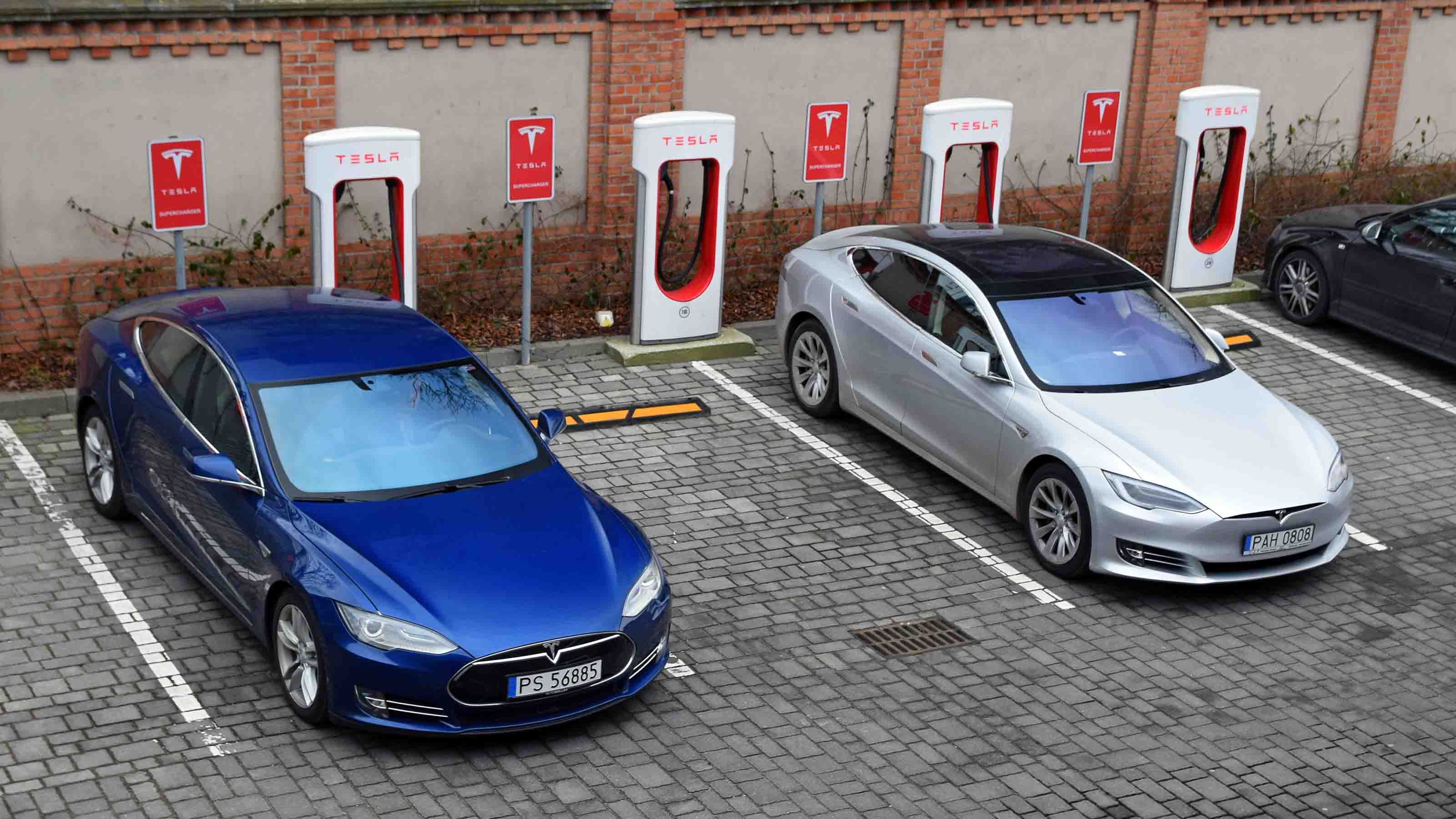Tesla Deliveries Miss Estimates. Is the EV Market at Risk?
Third-quarter deliveries for Tesla came in lower than analysts were expecting, but the company is still in solid shape heading into Q4.


Tesla (TSLA, $242.40) reported its third-quarter production and delivery numbers this past Sunday. Investors were disappointed by the figures, and TSLA stock lost more than 8% in Monday trading.
How bad were they?
They weren't all that bad. In fact, they were record-setting, with total production of 365,923, up 54% over Q3 2021. And Tesla delivered 343,830 vehicles over the three-month period, a 42% increase from a year ago. Deliveries of the Model S and X – its two older models – more than doubled on a year-over-year (YoY) basis to 18,672. The newer Model 3 and Y had collective deliveries of 325,158.
From just $107.88 $24.99 for Kiplinger Personal Finance
Become a smarter, better informed investor. Subscribe from just $107.88 $24.99, plus get up to 4 Special Issues

Sign up for Kiplinger’s Free Newsletters
Profit and prosper with the best of expert advice on investing, taxes, retirement, personal finance and more - straight to your e-mail.
Profit and prosper with the best of expert advice - straight to your e-mail.
That last figure appears to be the fly-in-the-ointment for investors. Although the Model 3 and Model Y deliveries increased 40% YoY, they jumped 87% in Q3 2021. That suggests these two electric vehicle (EV) models are experiencing decelerating sales.
What Tesla's Q3 Numbers Mean for EV Sales
Investors could be wondering what Tesla's latest production and delivery numbers mean for the entire EV market.
Analysts expected Tesla to deliver between 14,000 and 15,000 more EVs than it did in the third quarter. That's a 4.2% miss on the consensus estimate.
However, the fact Tesla didn't deliver all the vehicles it produced in the quarter – a 22,093 shortfall – suggests sales in China were softer than expected, forcing the company to send some of the EVs produced at its Shanghai factory to Europe and the U.S.
Investors who were expecting Chinese sales to be stronger are now left wondering if Tesla's miss will be a familiar tune across all EV stocks? Or is this merely a blip in Elon Musk's quest to sell more electric cars than anyone else.
Tesla is Confident About a Q4 Rebound
TSLA's delivery-to-production shortfall is likely a one-time affair rather than the start of an ugly trend. The company expects its fourth-quarter production to jump dramatically and continue into next year amid solid increases in output at its two newer assembly lines in Texas and Germany.
Tesla still feels it can grow deliveries by 50% in 2022 despite lingering supply-chain issues. Through the first nine months, it produced 929,910 electric vehicles. Its internal projection for fourth-quarter production of its two newer products is 495,000, or approximately 95% overall. It believes that it can produce 40,000 EVs per week by the end of 2022.
If it does meet this fourth-quarter goal, it will produce more than 1.4 million EVs worldwide in 2022. Its internal projections also put it on course to produce 2.1 million EVs in 2023.
CFRA Research analyst Garrett Nelson discussed Tesla's latest production numbers in an Oct. 3 note to clients. He has Strong Buy rating and a $400 price target on TSLA stock.
"While shares could trade lower on Monday, we continue to view TSLA as one of the market's most compelling earnings growth stories,” Nelson stated in his note.
UBS analysts believe that the Tesla is best positioned to be able to lower prices in 2023 to ensure its increased production capacity is fully utilized. And it can do this while maintaining its healthy 30% auto gross margins.
If there's an industry slowdown, Tesla didn't get the memo. It appears to be in excellent shape heading into the final quarter of 2022 and beyond.
Profit and prosper with the best of Kiplinger's advice on investing, taxes, retirement, personal finance and much more. Delivered daily. Enter your email in the box and click Sign Me Up.

Will has written professionally for investment and finance publications in both the U.S. and Canada since 2004. A native of Toronto, Canada, his sole objective is to help people become better and more informed investors. Fascinated by how companies make money, he's a keen student of business history. Married and now living in Halifax, Nova Scotia, he's also got an interest in equity and debt crowdfunding.
-
 10 Cheapest Places to Live in Washington
10 Cheapest Places to Live in WashingtonProperty Tax Is Washington your go-to ski destination? These counties combine no income tax with the lowest property tax bills in the state.
-
 Healthy to 100: Secrets from Countries Where Retirees Age Best
Healthy to 100: Secrets from Countries Where Retirees Age BestLongevity is a team sport, according to author Ken Stern. Here's the secret sauce for living long, healthy lives from countries like Italy and Japan.
-
 My First $1 Million: Semiretired CPA, 68, San Francisco
My First $1 Million: Semiretired CPA, 68, San FranciscoEver wonder how someone who's made a million dollars or more did it? Kiplinger's My First $1 Million series uncovers the answers.
-
 If You'd Put $1,000 Into Lowe's Stock 20 Years Ago, Here's What You'd Have Today
If You'd Put $1,000 Into Lowe's Stock 20 Years Ago, Here's What You'd Have TodayLowe's stock has delivered disappointing returns recently, but it's been a great holding for truly patient investors.
-
 Stocks Extend Losing Streak After Fed Minutes: Stock Market Today
Stocks Extend Losing Streak After Fed Minutes: Stock Market TodayThe Santa Claus Rally is officially at risk after the S&P 500's third straight loss.
-
 If You'd Put $1,000 Into 3M Stock 20 Years Ago, Here's What You'd Have Today
If You'd Put $1,000 Into 3M Stock 20 Years Ago, Here's What You'd Have TodayMMM stock has been a pit of despair for truly long-term shareholders.
-
 Santa Claus Rally at Risk as Tech Stocks Slump: Stock Market Today
Santa Claus Rally at Risk as Tech Stocks Slump: Stock Market TodayThe Nasdaq Composite and Dow Jones Industrial Average led today's declines as investors took profits on high-flying tech stocks.
-
 If You'd Put $1,000 Into Coca-Cola Stock 20 Years Ago, Here's What You'd Have Today
If You'd Put $1,000 Into Coca-Cola Stock 20 Years Ago, Here's What You'd Have TodayEven with its reliable dividend growth and generous stock buybacks, Coca-Cola has underperformed the broad market in the long term.
-
 If You Put $1,000 into Qualcomm Stock 20 Years Ago, Here's What You Would Have Today
If You Put $1,000 into Qualcomm Stock 20 Years Ago, Here's What You Would Have TodayQualcomm stock has been a big disappointment for truly long-term investors.
-
 Why I Trust These Trillion-Dollar Stocks
Why I Trust These Trillion-Dollar StocksThe top-heavy nature of the S&P 500 should make any investor nervous, but there's still plenty to like in these trillion-dollar stocks.
-
 Dow Adds 314 Points to Thanksgiving Rally: Stock Market Today
Dow Adds 314 Points to Thanksgiving Rally: Stock Market TodayInvestors, traders and speculators enjoy the best Thanksgiving Week gains for the major stock market indexes in more than a decade.